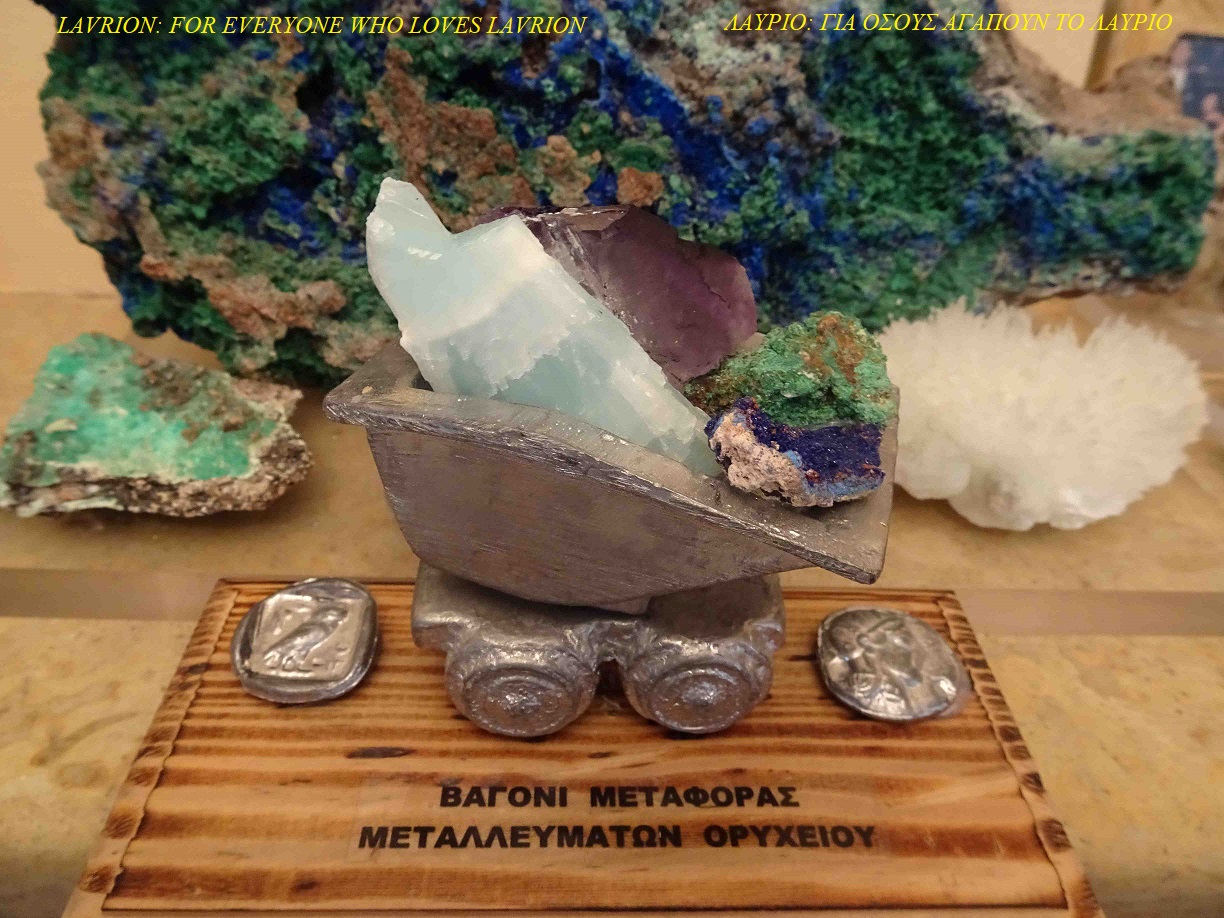
by Dr. Peter G. Tzeferis

There is evidence that the ancient Greeks started mining in the Lavrio area before 3000 BC, indicating that this was the starting point of mining in the whole Europe. The systematic and intensive exploitation of the silver and lead ores though, began with the birth of the Athenian Republic in 500 BC. In 483 BC the discovery of rich vein of silver in the vicinity of modern Ag. Konstantinos, otherwise known as Maronia, prompted large scale extraction and metallurgical processing of the mineral by the Athenians.
The wealth produced in the Lavrion mines was initially used at the insistence of Themistokles to construct a formidable navy of war “triremes” (specific ancient vessel). The Athenian navy proved to be of critical utility soon thereafter, when Xerxes invaded Greece with the Persian army by land and his navy by sea in 480 BC.
The silver extracted from the mines was transformed into the Athenian Tetrhadrachmon coin, which became the dominant commercial currency of the eastern Mediterranean during the classical era. These coins, along with the tribute paid by their allies in the Delian league, bestowing even more wealth upon Athenian citizens who used it to maintain their empire and to finance grand cultural projects.
The mines eventually declined during the Peloponnesian War (431-404 BC) and stopped producing soon after the Spartans controlled access to the mines. Afterward, silver and lead extraction continued on and off throughout the subsequent centuries, but production never reached the volume produced during the Classical era.
The mines were abandoned in the 6th c. CE, and only reopened in 19th c. CE. In 1863, the Italian mining engineer and operator J.B.Serpieri, gets convinced to exploit the ancient slags, after having been consulted the detailed report of the young mining engineer A. Kordellas, who was sent by the Greek young government to visit Lavreotiki in1860, on that purpose. So, there has been a new era for Lavrion mines that worked for almost 100 years, till modern times. The extraction of lead and silver (in smaller quantities) helped finance the newly formed country of Greece in the 19th c. CE.
The Lavrion mines were finally abandoned after most of the “easy” ore deposits were exhausted in 1982. Moreover, from late1980’s till now, Lavrio faced a new cycle of industrial crisis, as a result of the broader de-industrialization all over Greece. Tens of units ceased their operation and more than the 20% of the population left the town, due to unemployment.
Today, several abandoned mining sites sprinkle the rugged landscape around the modern town of Lavrion. The most prominent archaeological site is located in the vicinity of Agios Konstantinos-Kamariza place. The ancient mine extraction site is easily accessible by car but poorly signposted and with no facilities anywhere nearby. Unfortunately by the years, there was an unevitable decay that needs a special restoration care.
And of course the living city of Lavrio, full of life. In the last few years, the city of Lavrio has gone through an amazing transformation. Restaurants, shops and cafes have opened and Lavrion has new life due to the rebuilding of the port into a major ferry terminal for the Greek islands and the relocation of several sailboat charter companies and a marina.
